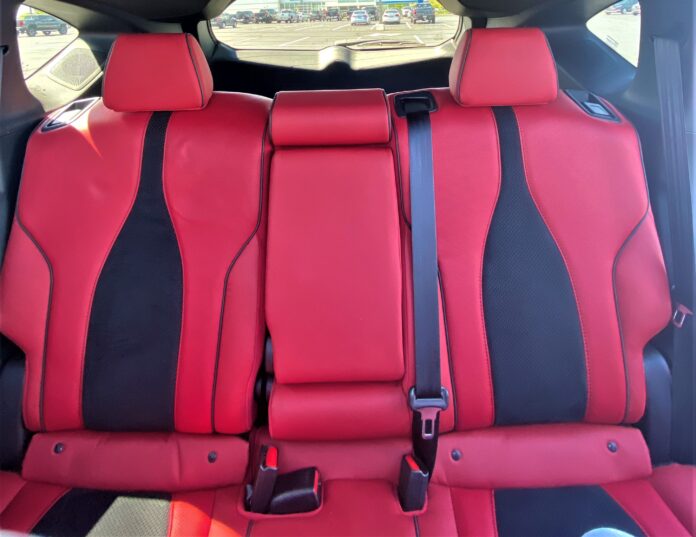Technology is advancing at a rate never seen before, affecting everything around us, including our methods of transportation. These days the automobile industry is looking for ways to introduce current technologies for a more sustainable, convenient, and comfortable future.
The technological advancements made with electric cars over the last decade has made them more affordable to more consumers, made them more competitive to the traditional gas-powered vehicles, and made them convenient to charge and maintain. At the same time autonomous featured vehicles are also making their own great strides in advancements; with their self-parking features, traffic-aware cruise control, autosteer and more. While not yet fully autonomous, the question begs to be asked, what does the interior of our car look like, when we don’t have to focus on the road. What happens to the traditional design of a car when it needs no driver?
Currently, the working Autopilot and full self-driving features still require an active driver’s supervision and therefore do not make the vehicles fully autonomous. Full autonomy will be dependent on achieving reliability through an excess of human drivers as demonstrated by billions of miles of experience, as well as regulatory approval. Yet this is not so far away, which is why the questions of design should be asked and answered now, to prepare for the coming reality of the future.

Honda has asked OSU Industrial Design students to design for the automobile passenger experience in the context of fifteen to twenty years in the future with consideration that data shows cars will most likely be electric and approaching full autonomy. Their proposed target audience is ages 18-34 of those who will be passengers/ users of the vehicle. The Honda partnership has requested that students create a feature that will give their vehicles a competitive edge in the automobile market while also preparing for the future generation of vehicles.
The objective is to provide developed features, additions or changes that will enhance the passenger experience. They want their passengers and users to experience a sense of joy and comfort while riding, and to create a positive environment that reflects the technology and their socio-economic climate. The aim is to think beyond what we already know about current passenger layouts or design , identify problems with it and to find a solution in the unknown territory that fully autonomous vehicles provide. This invites us to look at all areas of the car that would contribute to the passenger experience, which is rather expansive considering the reality it is the whole of the car that makes up an individual’s experience.
Therefore, to identify just some of the features, these are some of the areas of interest that have more influence over the passenger experience: Seating and comfort, with consideration to layout, adjustment capabilities, and personalization features. Storage or work stations, such as tray tables, pockets, cup holders, hangers, with fold out/fold in features. Screens for work or entertainment adaptable to the user. There are many more areas that can be poured into in terms of adjusting for the user, but these are just some that Honda has specifically called out as areas they seek our input in, so they were things we first looked to when doing our research. However we were still keeping in mind that there could be other problems to be identified along the way.
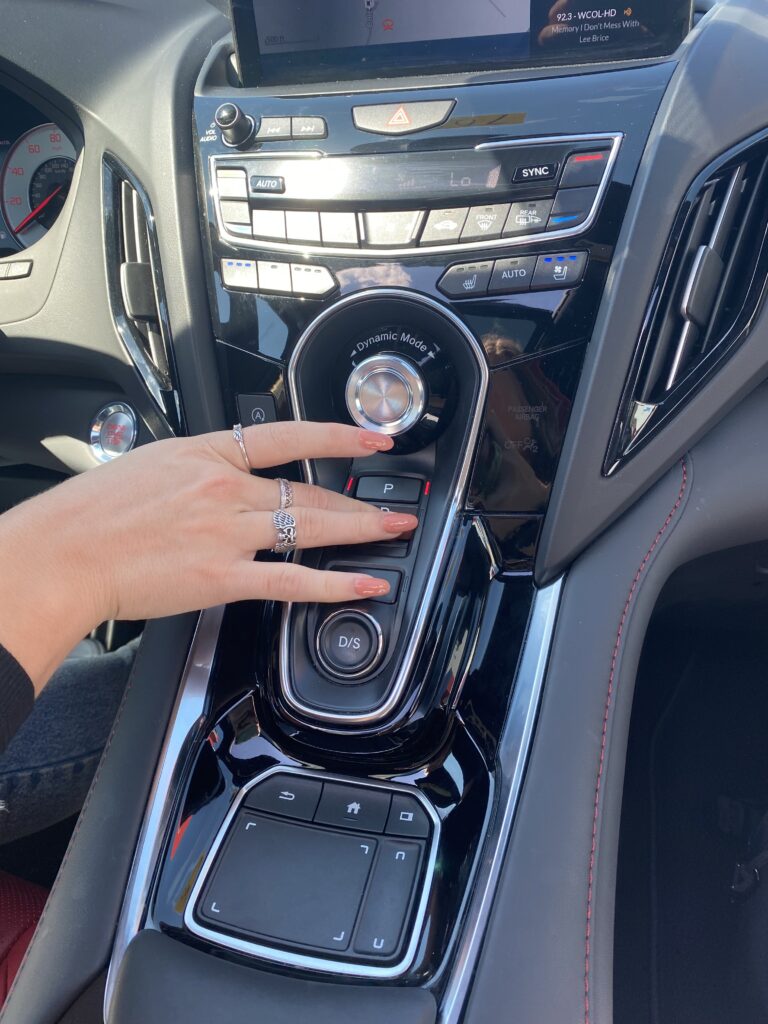
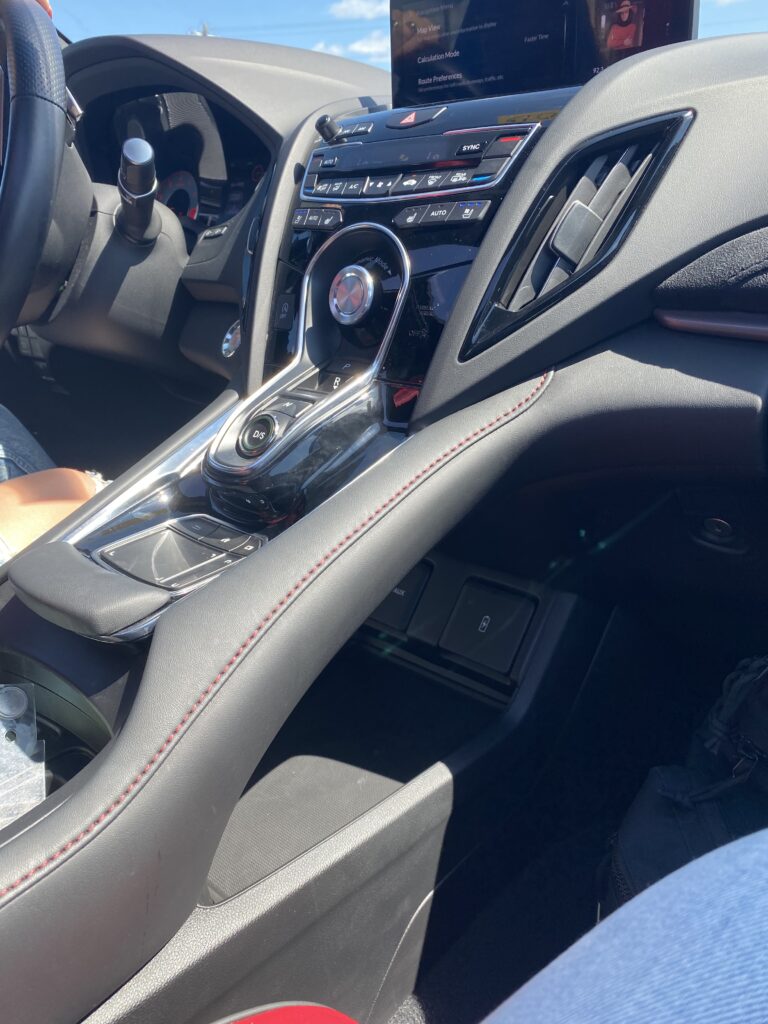
The research began in a secondary form first by getting familiar with Honda as a brand, who they were, what they created as a company, what they stood for and what were their cars really like. They had tapped into a broad variety of technological products from the early motorcycles to lawnmowers, to even planes and of course the car. In so many of the fields they went down they proved themselves worth of the challenge, creating successful identifiable products. Research showed that Honda was often referred to across many articles as a very forward-thinking brand, full of ideas, at the forefront of innovation with the evidence to prove it. From cars, to planes to rocket ships, Honda has had their hand in it all, and so far they are proving to be ready for any challenge they face. They have never shied away from the challenge, and in fact their founder enthusiastically invites challenge.
As a method of some of the primary research, I began by test driving some of their newer models as new as 2020, as well as their older models between 2009 and 2014. Everything about the car interior was taken not of, photographed, and observed, specifically the back passenger seats, that being the area Honda has specifically requested be observed and designed for.
Not a whole lot has seemed to change in the interiors between some of the older and new models, besides the design aesthetics which have evolved to fit with consumers desires and updated to trends. But the general layout, seats and even the features are not that different. Slight changes in how the seat move have changed for make it easier for the user to adjust their seating, or put the car seats down entirely, set the overall seat remains the same, there isn’t any personalization options or real adjustment capabilities. Windows, seatbelts, and leg room are all about the same, seats all still face the same way and feel the same when you sit in them. While the car interiors have changed very slowly, the driving features are actually evolving quite swiftly.
These driving features, most which march us closer to the world of autonomous vehicles, will inevitably have an impact on the way our cars interiors will look. Which is why the question of design here is so import, what will it look like, how it function?
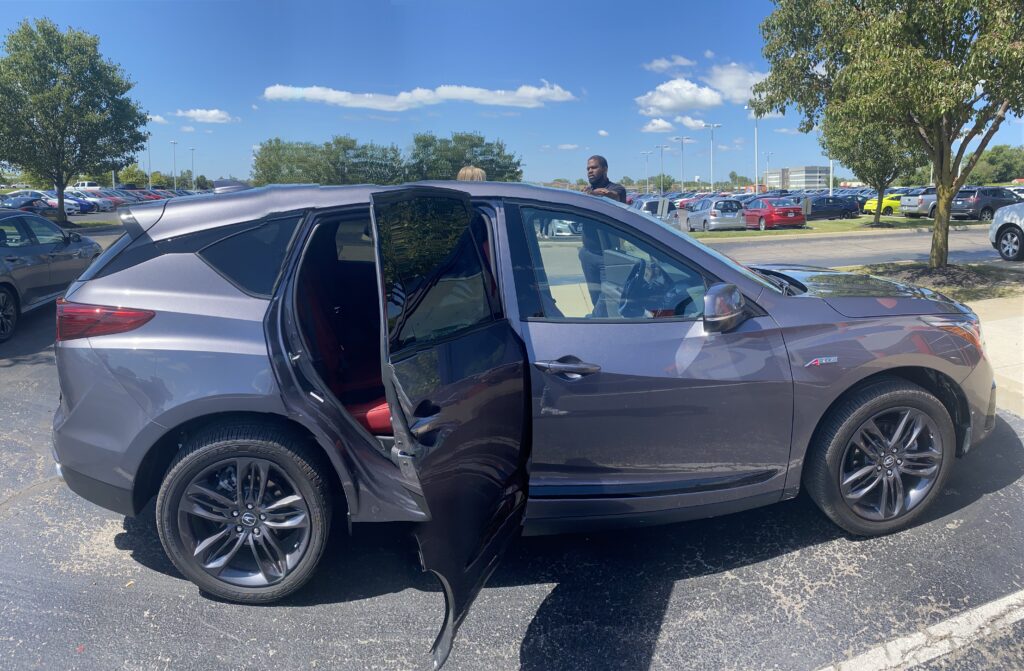
Secondary research looked at the technology that might guide us to answering these questions. In it the researched showed that car companies were pairing with tech companies and research institutes to find innovative ways to change how things are currently being created and done. To give a really interesting example of this, BMW has paired up with some at MIT to research and create 3D inflatable material which can be dynamically controlled and influenced by the touch of a button. It its innovation like this that designers will be able to implement to change current automobile interior design, and that consumers will then see in their future vehicles. Using the secondary research of technology as a guide, primary research methods were put together to gather firsthand accounts and findings.
A series of primary research methods were conducted to gain insight on what people desired from their cars, what they liked, what they didn’t like and what they expected from the future. These are the current methods of primary research:
Ethnographic Observations – This was conducted a series of times, in a variety of different car brands, makes and models. Genera discussion and observation between group members was recorded, noted, and documented. User scenarios in action were also recorded and photographed and then discussed.
Survey – Individuals were asked a series of questions from multiple choice or fill in the blank sections and to give their opinion and answer they felt best matched the question. This was used to gain insight on the statistic side of users passenger experiences.
Card Sort – Individuals were asked to sort image cards to explain and showcase what they desired from the interior of a car. This included layout, features, seat design, tech implementation, and visual aesthetics.
Guided journal – following the cart sort, participants were asked to explain in detail why they chose certain images compared to the others. All of their thoughts, feelings, reactions, and opinions were written down, and then recorded and organized for understanding.
Video Diary – Individuals acting as passengers were asked to ride along in the car and film their experience. During this time they were asked to discuss how they felt, their reactions and share their thoughts on anything that came to mind during the experience. This included things they liked, didn’t like, desired and felt.
The card sort provided a great deal of useful information, especially when it was followed up with the guided journal. Participants were able to reflect on their choices and explain with detail why they picked the things they did. This showed a bunch of problems and desires.
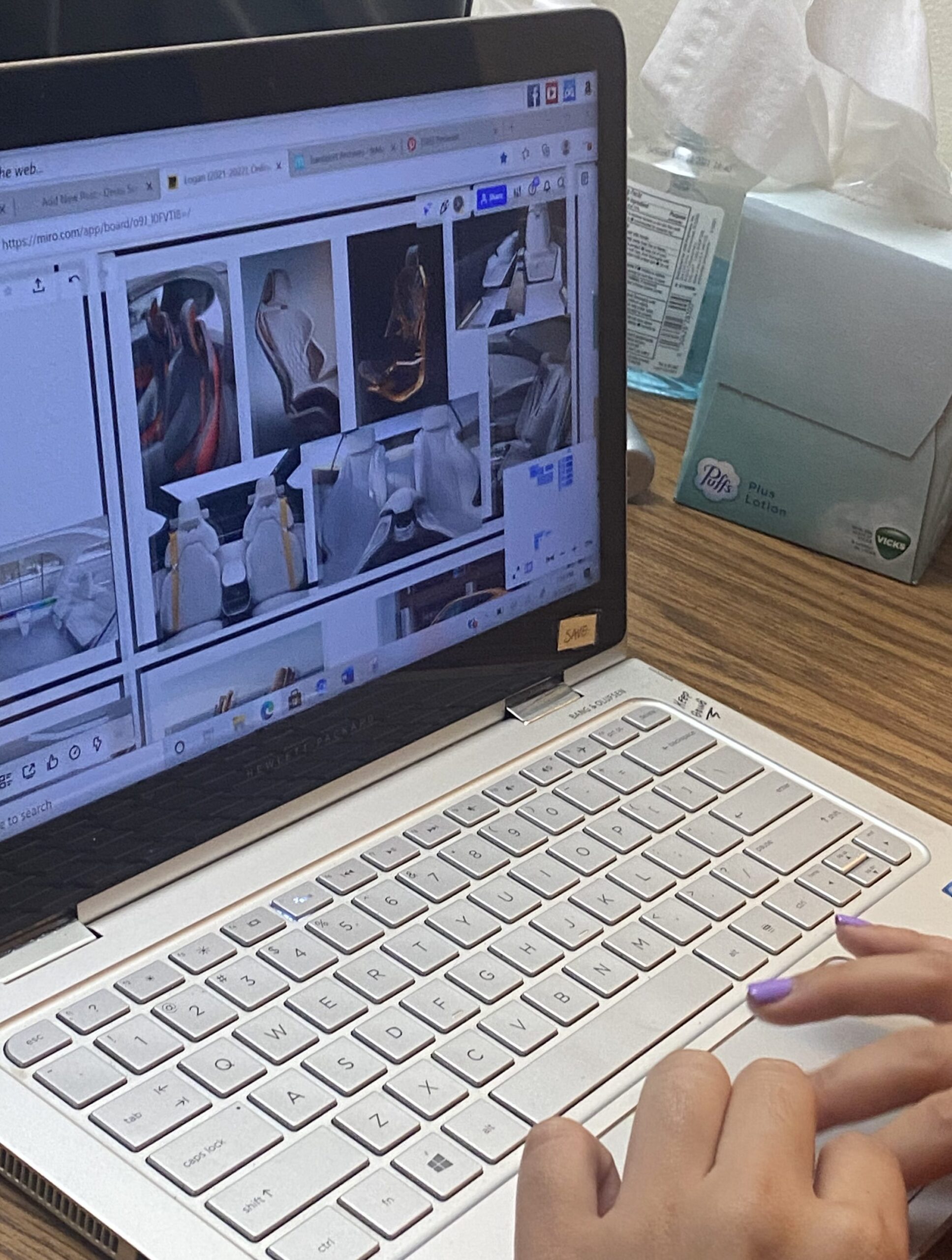
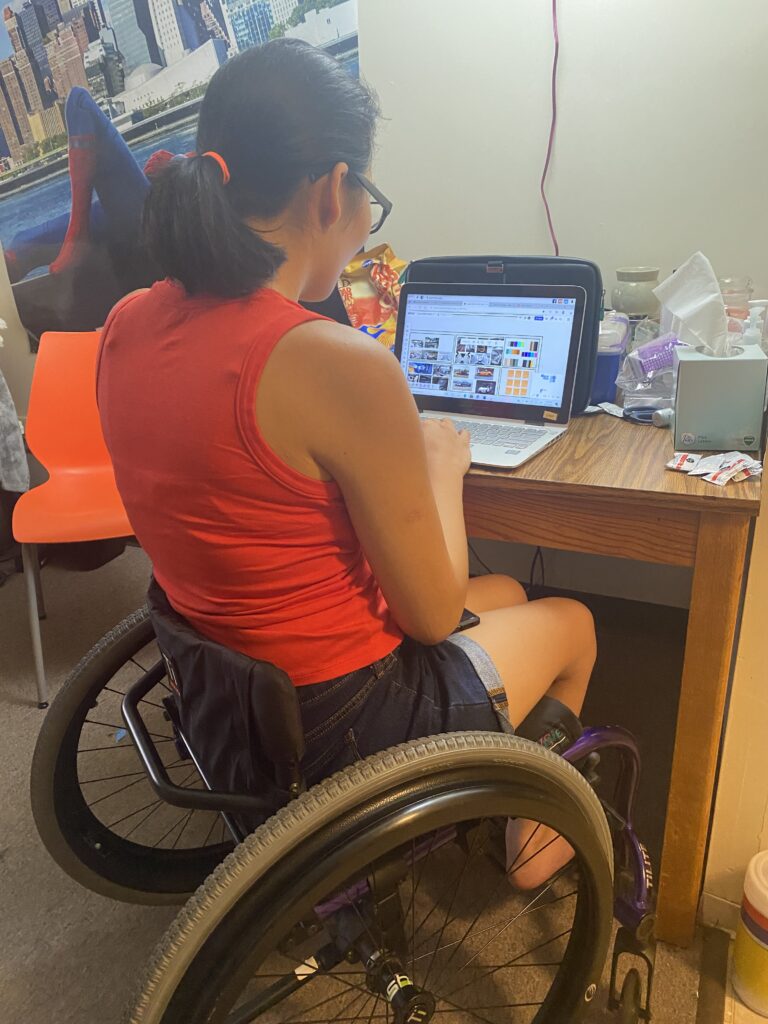
For one thing, on average most participants chose the same seating option when shown a variety of choices, all of them declared that they chose is simply because they felt it looked the most comfortable. Some went as far as to compare it to current seating in their explanation, saying that they personally experienced pain in their back/shoulder area when sitting in a car for a long time, and that the way this particular seating option was designed, would eliminate that discomfort. Overall this was an interesting observation, because the seat that was chosen for comfort was a concept design and was actually chosen over existing car seating. Which may lead to the theory that people aren’t finding current seating to be comfortable, or at least not as comfortable as it could be.
Another popular average found in the research was seating arrangement. When asked to pick what type of layout the car interior they felt worked the best, all users picked the option where it depicted people facing each other. Their reasonings however came out kind of all over the place, but with one big general theme, communication. All participants explained that they desired communication in one from or another. Some of the responses gave examples as following. Participants listed wanting to face each other so they could play games and talk easier. Share food, or other materials. They listed that it would be more fun to face your friends, it would in some ways feel like a party bus and have a fun enjoyable environment. Another participant facing disability viewed one of the more open layouts as a best for their situation, they felt they could easily get their wheel chair in a car of this nature. They felt they could get in and out of seating on their own, or remain in their chair the time, their ultimate desire out of this was to gain a sense of independence and a greater sense of community through easier communication.
Another popular consistency when it came to the choices was the doors of the vehicle. Most participants listed they liked the so called “butterfly winged doors” on the Tesla Model x, which are actually called Falcon-Wing doors. Participants listed choosing them for reasons of conveniency, ease, practical sense, and because they felt they looked “cool”. The idea of being able to open doors with a press of a button without the door also being in the way is what participants listed as being most desirable. One participant listed that she hated carrying groceries and having to deal with opening the doors, she felt it she could open the doors at the press of a button that would make things a lot easier. One participant called out an interesting strong opinion that the idea that doors even opened the way they currently do, is old and out dated, felling that there’s got be a smarter easier way to have access to the vehicle. Another participant suffering from a disability, therefore confined to a wheelchair, listed that doors are hard for them to open and often don’t open far enough for their wheelchair to fit the space it take for them to get themselves in a car. The same participant also stated that car doors, being heavy set, are prone to falling closed on the slope of a driveway, and that being in a wheelchair made this situation incredibly difficult and frustrating, they said these doors would have made all these problems go away.
The card sort showed that participants also had a wide variety of desires when it came to technologies and design aesthetics.
When asked to pick from a variety of color pallets, not one participant chose the same thing. or when the same color pallet was chosen, the participant wanted to add some others to it as well. When asked to reflect upon their choices, they all had differing reasons. Some liked brightly colorful fun colors, that looked cool, stood out, fit their personal looks or “vibes” as stated by one participant. Others said they liked the classic car look, leathers, darker colors clean and industrial looking, while some loved the bright light colors, explaining that it felt new, modern, and fit the advanced technology theme in their mind.
Technologies were chosen based off personal interest as well, though across participants most chose screens and lighting as something they wanted in the car, however the reasoning was pretty different. Some said that they wanted screens in the car for playing video games and/or consuming media, like movies, TV shows, YouTube, and one even said TikTok. One expressed wanted multiple screens in the car so they could do multiple things at once, checking their emails, while also watching the news of the day. Most participants really liked the idea of being able to have multiple wide touch screens around their car where they could do different things simultaneously.
The research begins to show how different people have such different desires and needs. While they may have picked and sorted cards in the same or similar ways, their reasonings were often very different. It showed a desire for personalization and individualism in the car, while still maintaining that ability to have easier communication. It also showed that people are desiring more technology in their vehicles, this might mean they desire to achieve more during the travel. For right now, riding in the car means getting from one place to another, it lacks the meaningful or productive experience possibility. That’s a whole timeslot of wasted time in every persons day, and the fact that all participants called out the desire of wanting to be able to do more is actually really interesting.
With the video diary participants were asked to record their passenger experience and also discuss what they were feeling and thinking, and also encouraged to speak about literally anything that came to mind about their passenger experience. The first round of this research method was done with three children, ages eight to thirteen. They were given a phone to record with and were driven around for roughly half an hour and took turns sharing their experiences. Being children, their imaginations were in full swing during this participant study, they decided to list a whole bunch of things wild things they wanted in the car, from a mini fridge to bullet proof glass, to even a full-on coffee machine built into the car. But besides the wild ideas, they also gave a bunch of really helpful insight when sharing their experiences.

Children reported experiencing frustration in long trips when they had to be close to one another, they stated they often would get into fights when others got in their space or when they felt cramped. They felt a strong sense of lacking their own personal space and didn’t like it when others in the car were able to touch them, see what they were doing or take their toys. They also expressed wanting their own charging ports and cupholders because having all that near the front and together, allowed for the other members of the car to take things or mess with it. Children also liked the ideas of screens in the car because they believed there was a lot they could do with it all, like play games or watch their favorite shows. They sated this would be nice because they had a hard time not getting bored in the car or, as their parents said, “fiddling with things”.
Interestingly enough, adults expressed somewhat similar problems and desires. They reported getting bored in the back seat of the car, feeling cramped and when riding with others they felt too as though their personal space was being infringed on. Participants of this study reflected being open to many new ideas, looking for change and excitement and something that seemed up to date on the current technological climate.
When bringing together some of the big main points of the research findings, many problems can be identified and lead to possible product solutions. These big takeaways include the desire for comfort, convenience, personalization, individualism, and communication, all including an atmosphere that is joyful, positive, and inclusive. The current interior space of the car has needs for all of these things, which can be done through design and the implementation of new and upcoming technology.

